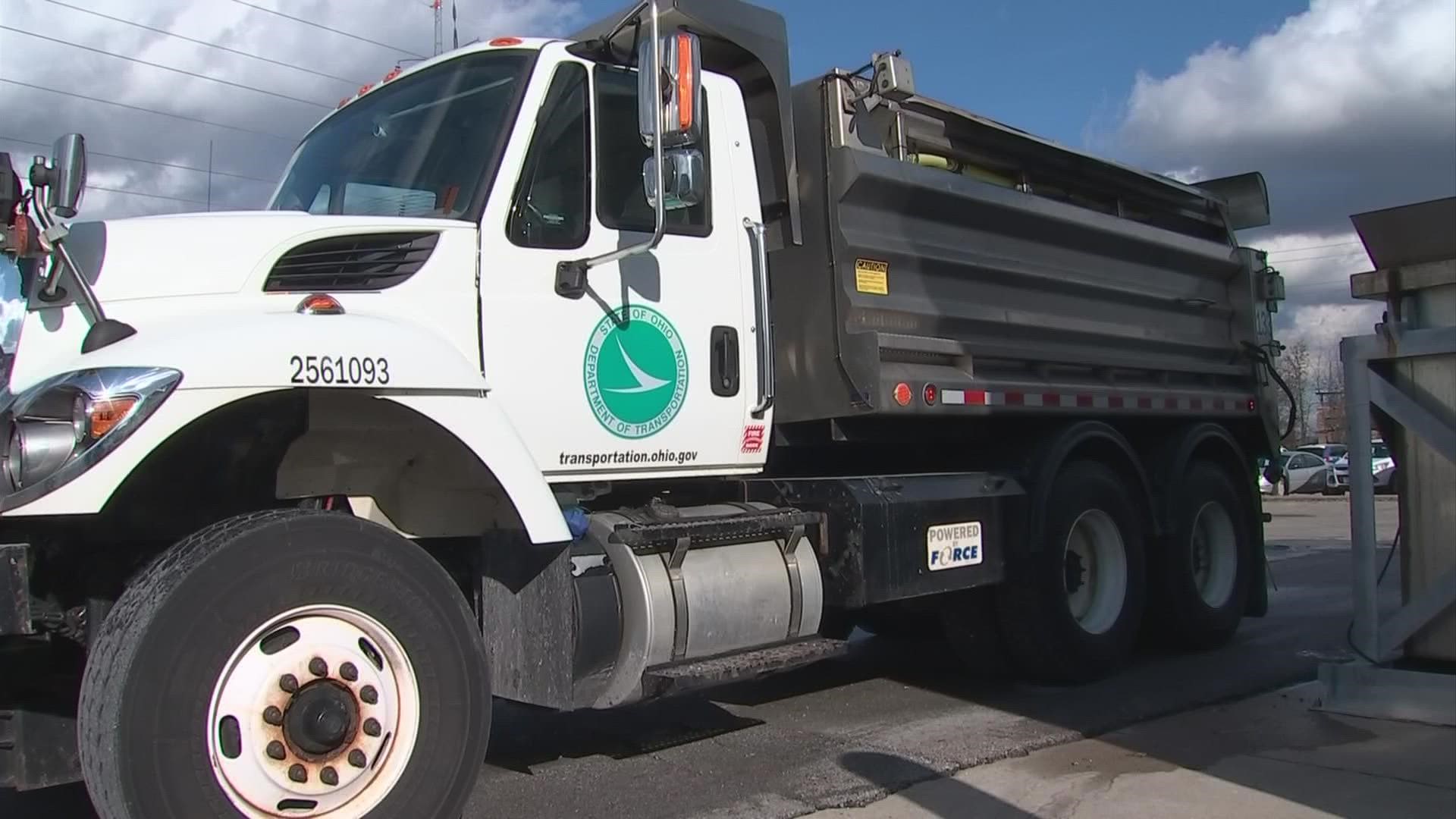COLUMBUS, Ohio — Central Ohio has seen a fairly mild winter so far, but that could start to change come Thursday.
The Ohio Dept. of Transportation was preparing for the storm a day ahead of time, laying down brine on the state’s roadways.
So far, the state has only used 3,000 tons of salt compared to this same time last year when more than 40,000 tons already had been used.
And that lighter workload likely came in handy because the state is facing a 50% driver shortage.
“We’re competing with all of these other warehouses – with Amazon, with FedEx – that also all need CDL drivers,” said Brooke Ebersole, public information officer for ODOT Columbus. “There’s less supply of drivers and more demand to go around.”
Last fall, ODOT put out the call for more drivers, hoping to fill 500 spots. But that didn’t happen. Ebersole said ODOT Columbus was seeking to fill 50 positions but only received roughly 20 applications.
That means the workload may shift for drivers along with the time needed to clear routes.
“It’s not a question of whether we will plow or won’t plow, whether or not we will salt your road,” Ebersole said. “We will always be out there, we will always be combatting that winter weather. It’s just a matter of how long you might wait for your route home or your route to work to be plowed in the event of a winter storm.”
During a typical season, one driver would be assigned one route. This year, that driver might have two or three routes. And a route that normally might take 90 minutes to clear could take three hours.
In fact, ODOT has a time rule it typically follows – a road should be cleared and passable no more than two hours after the snow has stopped. The agency reached that goal 95% of the time last year. This year, that might not happen.
Meanwhile, along with the full-time and seasonal drivers, auxiliary drivers may need to answer the call more often.
“Those auxiliary drivers are really going to be key for us this winter because those are people that already work at ODOT,” Ebersole said. “They might work in finance, they might work in engineering during the day. So they work their eight-hour shift, and they might clock out 4 o’clock tomorrow, jump in a plow truck for the evening commute, and be out there salting the roads just like our regular highway workers.”
And that leads to the annual reminder from ODOT to make plenty of room for the plows. If they face challenges, it can make an already challenging situation even worse.
“If one of those plows gets hit, they get taken out of commission,” Ebersole said. “That that plow gets taken off the road. So now those two or three routes that driver was doing, another driver has to take on that workload. And it’s just that much more cumbersome to that driver’s workload. It’s more imperative than ever to just slow down, give those plows plenty of space so that everyone can get home safely.”

